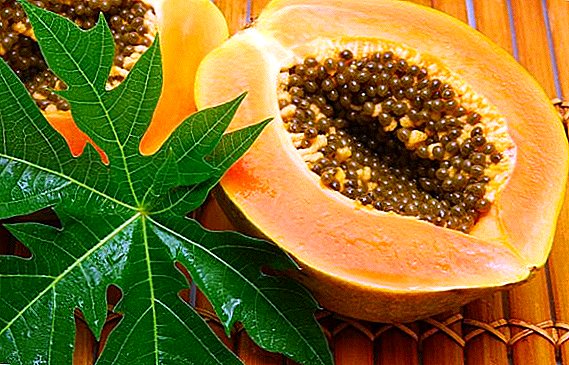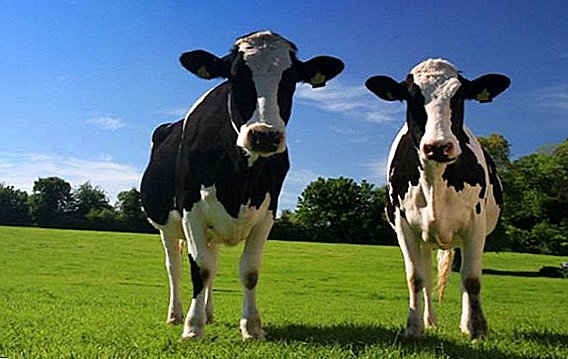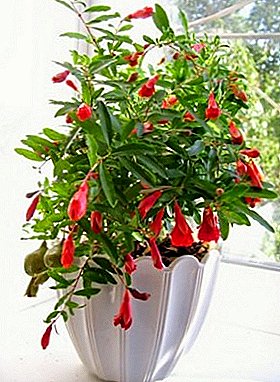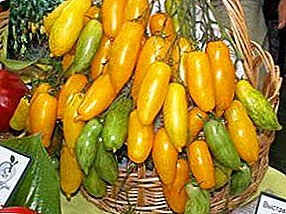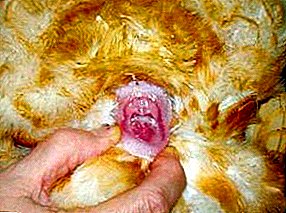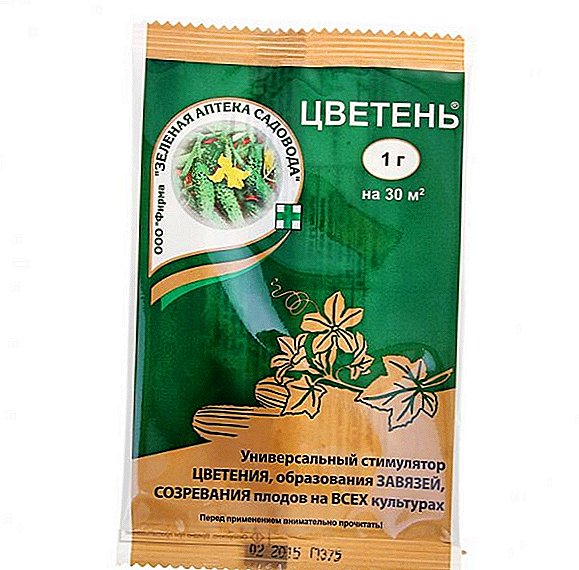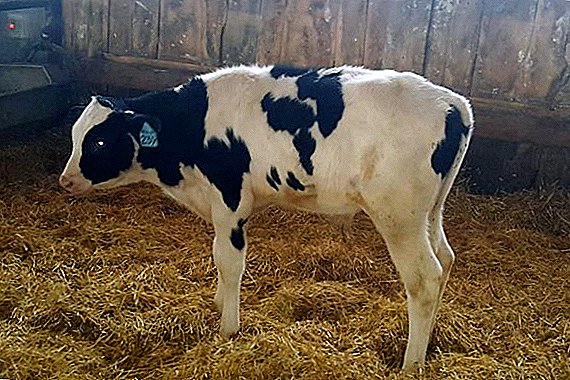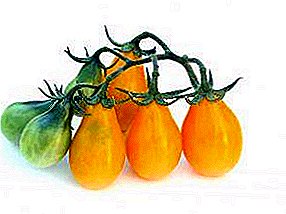
The unusual shape and color, as well as the excellent taste qualities united in the tomato variety “Orange Pear”.
The shrubs of this tomato variety are literally hung with medium-sized fruits that are great for harvesting and fresh consumption.
Tomatoes Orange Pear: variety description
| Grade name | Orange pear |
| general description | Mid-season, indeterminantny grade of tomatoes for cultivation in greenhouses and an open ground. |
| Originator | Russia |
| Ripening | 110-115 days |
| The form | Fruits are pear-shaped |
| Colour | Orange yellow |
| Average tomato mass | 65 grams |
| Application | It is suitable for cooking, canning in whole and for salads |
| Yield varieties | 5-6.5 kg per square meter |
| Features of growing | Loves fertile soil |
| Disease resistance | It has moderate disease resistance. |
 The variety was created in Russia, registered in the register of varieties and hybrids in 2008. It tolerates short-term lowering of temperature and intense heat. It is suitable for cultivation in the climate of the Black Earth region and the middle zone, the southern regions of Russia and the Urals. In Siberia, it is recommended to grow it under film.
The variety was created in Russia, registered in the register of varieties and hybrids in 2008. It tolerates short-term lowering of temperature and intense heat. It is suitable for cultivation in the climate of the Black Earth region and the middle zone, the southern regions of Russia and the Urals. In Siberia, it is recommended to grow it under film.
"Orange pear" - varietal tomato with indeterminate growth type. Its bush grows in height to one and a half meters, and high productivity is reached due to cultivation in 1 stalk. This tomato has no stem.
In terms of ripening tomato Orange Pear belongs to the mid-season varieties, that is, its fruits ripen no earlier than 110 days after sowing the seeds. Tomato fruits well in open fieldhowever, high yields are observed when grown in greenhouse conditions. Resistance to certain infections of tomatoes is not pronounced.
 Read on our site all about the diseases of tomatoes in greenhouses and how to deal with them.
Read on our site all about the diseases of tomatoes in greenhouses and how to deal with them.And also about varieties of high-yielding and disease-resistant, about tomatoes not undergoing late blight.
Specifications
The average yield in the greenhouse is 6.5 kg per square meter of planting. In open ground, this figure is slightly lower, and is 5 kg per square meter.
| Grade name | Yield |
| Orange pear | 5-6.5 kg per square meter |
| Labrador | 3 kg from a bush |
| Aurora F1 | 13-16 kg per square meter |
| Leopold | 3-4 kg from a bush |
| Aphrodite F1 | 5-6 kg from a bush |
| Locomotive | 12-15 kg per square meter |
| Severenok F1 | 3.5-4 kg from a bush |
| Sanka | 15 kg per square meter |
| Katyusha | 17-20 kg per square meter |
| Miracle lazy | 8 kg per square meter |
Virtues:
- high yield;
- excellent taste;
- unusual decorative type of fruit.
disadvantages: insufficient high resistance to phytophthora.
To get a really big harvest, an orange pear is recommended to grow in one stem (usually indeterminant varieties are formed into 2 or 3 stems).
Tomatoes of this type have an original shape and color. Pear-shaped bright orange tomatoes weigh no more than 65 g. The flesh of the fruit is colored red-orange, the seed chambers are few (no more than 5 in each fruit), semi-dry, with a small amount of seeds.
Compare the weight of fruit varieties with others can be further in the table:
| Grade name | Fruit weight |
| Orange pear | 65 grams |
| White filling 241 | 100g |
| Ultra Early F1 | 100g |
| Striped chocolate | 500-1000 grams |
| Banana Orange | 100g |
| King of Siberia | 400-700 grams |
| Pink honey | 600-800 grams |
| Rosemary pound | 400-500 grams |
| Honey and sugar | 80-120 grams |
| Demidov | 80-120 grams |
| Dimensionless | up to 1000 grams |
The amount of dry matter is very high. Due to this, tomatoes of this variety are considered quite meaty. In the refrigerator, they retain their quality not more than 1.5 months. The tomato is suitable for culinary processing, conservation in an integral look and for salads.
A photo
Appearance tomatoes "Orange Pear" presented in the photo:





Features of growing
The tomato needs fertile, loose and moisture-intensive soil, timely garter to stakes or trellis. When ripening the first brush of the fruit, it is recommended to pinch the growth point and remove the leaf blades located below it.
Also, a tomato needs constant grazing and fertilizing with mineral and organic fertilizers. The landing pattern is 40 cm in a row and 60 cm between the rows.
Diseases and pests
"Orange Pear" has an average resistance to diseases, including phytophthora. However, a strong spread can be avoided with early planting of the culture. In addition, yield loss can be avoided by regular processing of plantings with copper preparations or phytosporin.
Of the pests the tomato is threatened only by the whitefly, and it is distributed only in greenhouses. You can get rid of it with insecticides or installing sticky traps.
| Late-ripening | Early maturing | Middle late |
| Bobcat | Black bunch | Golden Crimson Miracle |
| Russian size | Sweet bunch | Abakansky pink |
| King of Kings | Kostroma | French grapevine |
| Long keeper | Buyan | Yellow banana |
| Grandma's Gift | Red bunch | Titanium |
| Podsinskoe miracle | The president | Slot |
| American ribbed | Summer resident | Krasnobay |


